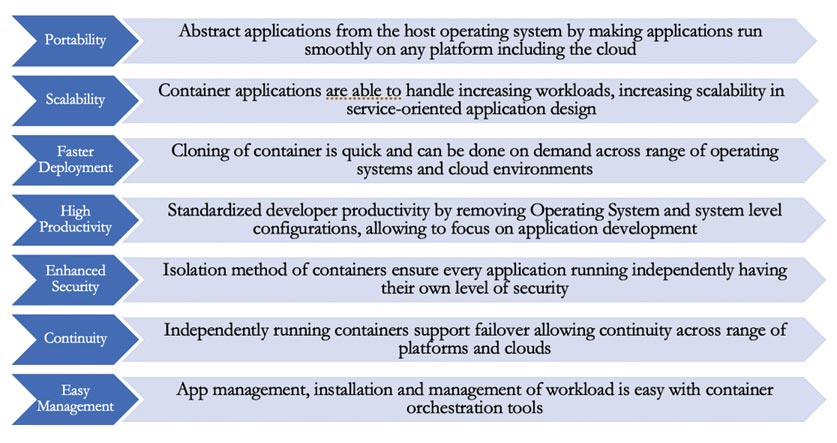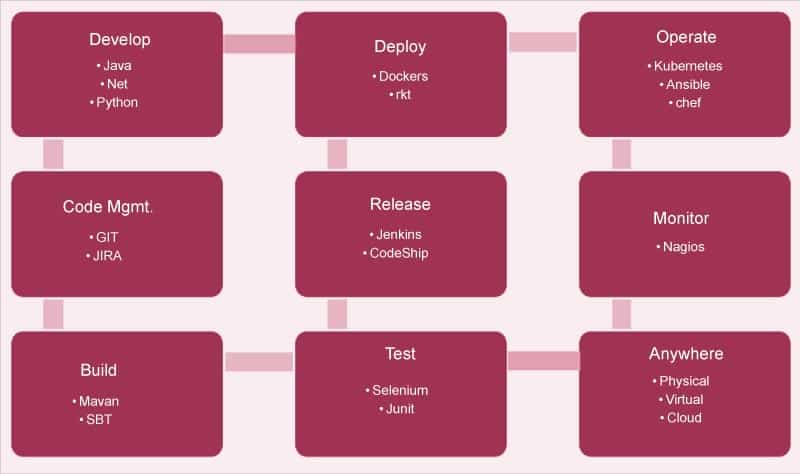Containerization offers organisations a range of benefits including scalability and security. There are a number of open source platforms that offer containerization solutions. Some of the best are listed in this article.
Containerization has significantly picked up pace in the last couple of years. The catchphrase of containerization, ‘build once and deploy anywhere’, is the core essence of modern applications. However, how and to which area of the technology landscape it’s applied has evolved all the way from the operating system to applications to services – a.k.a. microservices.
Containerization has become the de facto industry standard for its portability, scalability, faster deployment, high productivity, enhanced security, continuity, and easy management. Various containerization products are available in the open source and proprietary software market to best suit a given organisation. Identifying the right product and implementing it correctly helps unleash the power of containers. The best way to go about containerization is to identify the core requirements of the organisation and check the solution for portability, scalability, faster deployment, high productivity, enhanced security, continuity and easy management.
Kubernetes has become the industry leader in containerization solutions. Also widely adopted are Dockers, Apache Mesos and OKD. Though there are many commercial container solutions, open source solutions are not only free but have rich features and a wide developer adoption base. Let’s look at a few of them briefly, and the unique capabilities and functionality they offer.

Figure 1: Benefits of containerization
Kubernetes is a Linux based open source container solution for cluster computing. The ease of managing organised applications is a key allure for developers and DevOps engineers. Creating an app, and specifying a pipeline and type of workload is what it takes for Kubernetes to automatically run in an environment. This feature helps Kubernetes score over traditional container-based applications with respect to agility and reliability. Notification is built in for monitoring application deployment and execution statistics, making it easy for developers to focus on scale and performance. Once scale and security are addressed to the needs of the organisation, Kubernetes runs on autopilot for container-based applications to grow into whatever environment organisations choose, including the cloud.
Docker is yet another popular and widely adopted containerization technology, which works well on the Kubernetes platform. The speed at which containers can be created is one of the key benefits of Docker.
Apache Mesos is an open source platform for automating deployment, scaling, and management of large clusters of container based applications. Ease of customisation for a wide range of applications is a significant differentiator of Mesos. The ability to run Dockers and other such programs across the distributed network is one of the reasons many organisations adopt Mesos.
- APP Remote Control: Easily control your home...
- Voice Control: Smart plugs that work with Google...
- Easy Setup: It takes less than two minutes for the...
- Other Features: Diverse timer scheduling...
- 7*24 Customer Service: If you encounter any issues...
- BETTER INSIDE AND OUT – Entertainment is more...
- VIBRANT SIGHTS, FULL SOUND – Content on Prime...
- SMART HOME, SIMPLIFIED – Pair and control...
- STAY IN THE LOOP – Video call hands-free using...
- SHOW OFF YOUR GOOD TIMES – Amazon Photos turns...
OKD is an open source alternative to OpenShift with similar features and functionality. One of its top benefits is the ability to automatically distribute Kubernetes on all popular cloud platforms (AWS, Azure, GCP) and bare metal, OpenStack, Red Hat, and other virtualization providers. Quick application build, scaling, support for automatic high availability, load balancing, health check, and failover are the features that attract organisations to OKD.
In addition to these tools, there is a significant amount of innovation in containerization simplification in terms of maintenance and providing an additional layer of robustness. A good example is Toradex, which offers rich features when it comes to seamless integration with hardware, operating system, development tools, and remote management including updates and monitoring. The platform is highly reliable and secure. Toradex looks to increase efficiency across the board in the software development life cycle by providing easy-to-maintain products, and integration over-the-air including updates and device monitoring. This allows development teams to focus on what’s important to the business. Its operating system Torizon takes advantage of the large open source ecosystem to integrate Docker Hub and thousands of ready-to-use containers. This open source platform is customisable, and can be deployed on different hardware. And it’s built on open standards with open APIs to make integration with other open source and third party services easy. When an organisation is looking to develop IoT device based business solutions, using such tools helps to rapidly prototype and deploy them while the underlying platform takes care of the non-functional aspects of the application.
Containerization helps an organisation to identify the right tools and integrate them into an efficient process — from development and testing to deployment and operations. Figure 2 gives the reference architecture of container DevOps. As one can see, many of the tools are time-tested, popular, and widely adopted across the industry in development practices.

Figure 2: Application container DevOps reference architecture
- Smart Water Detector: Our water detector alarm...
- Quick & Accurate Leak Detection: Our WWD Water...
- All-Orientation Operation: Our water sensor alarm...
- Compact & Easy to Install: Our wireless water...
- Durable & Long-lasting: is made to last, with a...
- Super Durability】10000+ flex life and double...
- Gold-plated connectors and aluminum
- ★ Surround Sound Capability ★ Truely supports...
- ★ Multi-device support ★ Compatible with...
- Super Durability】10000+ flex life and double...
- Gold-plated connectors and aluminum
- ★ Surround Sound Capability ★ Truely supports...
- ★ Multi-device support ★ Compatible with...
As the adoption of the cloud continues to evolve from cloud as a platform and cloud-native to cloud-agnostic and to a multi-cloud journey, the best technology strategy organisations can adopt is containerization. When containerization is established as a platform with tools and technology that are a right fit for the organisation, it can be replicated across it for scalability, which is a major challenge enterprises face today.
Containerization, when adopted well in terms of application design, development and deployment, offers simplified maintenance while allowing for an additional layer of robustness. There is a growing maturity in containerization tools, especially the open source ones. Organisations must identify the type of workload they are looking to containerize, and choose the right platform and tools.





